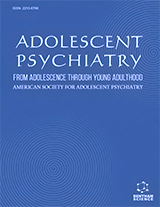Abstract
Background: Somatic symptoms are common in trauma survivors, including those who have experienced sexual abuse. These symptoms sometimes continue or get worse during the course of medical investigations, provoking even more investigation, and leading to a vicious circle involving invasive medical procedures and frustrating attempts at diagnosis and care. In such cases, the symptoms may be considered fulminant.
Method: This article presents a review and analysis of three cases of adolescents presenting with fulminant somatic symptoms.
Results: In each case, the patient’s symptoms resolved when the focus of care shifted from investigation to support for coping. Sexual abuse history had been overlooked during the acute phase.
Conclusions: In such patients, somatic investigation may evoke past trauma. Management should consider a shift in emphasis from investigation to promoting adaptation.
Keywords: Adolescents, medically unexplained conditions, sexual abuse, somatization.
Adolescent Psychiatry
Title:Fulminant Somatization: Medical Investigation in Trauma Survivors
Volume: 4 Issue: 3
Author(s): Gordon Harper and Oommen Mammen
Affiliation:
Keywords: Adolescents, medically unexplained conditions, sexual abuse, somatization.
Abstract: Background: Somatic symptoms are common in trauma survivors, including those who have experienced sexual abuse. These symptoms sometimes continue or get worse during the course of medical investigations, provoking even more investigation, and leading to a vicious circle involving invasive medical procedures and frustrating attempts at diagnosis and care. In such cases, the symptoms may be considered fulminant.
Method: This article presents a review and analysis of three cases of adolescents presenting with fulminant somatic symptoms.
Results: In each case, the patient’s symptoms resolved when the focus of care shifted from investigation to support for coping. Sexual abuse history had been overlooked during the acute phase.
Conclusions: In such patients, somatic investigation may evoke past trauma. Management should consider a shift in emphasis from investigation to promoting adaptation.
Export Options
About this article
Cite this article as:
Harper Gordon and Mammen Oommen, Fulminant Somatization: Medical Investigation in Trauma Survivors, Adolescent Psychiatry 2014; 4 (3) . https://dx.doi.org/10.2174/221067660403140912163502
| DOI https://dx.doi.org/10.2174/221067660403140912163502 |
Print ISSN 2210-6766 |
| Publisher Name Bentham Science Publisher |
Online ISSN 2210-6774 |
 20
20
- Author Guidelines
- Bentham Author Support Services (BASS)
- Graphical Abstracts
- Fabricating and Stating False Information
- Research Misconduct
- Post Publication Discussions and Corrections
- Publishing Ethics and Rectitude
- Increase Visibility of Your Article
- Archiving Policies
- Peer Review Workflow
- Order Your Article Before Print
- Promote Your Article
- Manuscript Transfer Facility
- Editorial Policies
- Allegations from Whistleblowers
- Announcements
Related Articles
-
Effects of Alcohol in the Lung
Current Respiratory Medicine Reviews Predictive In Silico Studies of Human 5-hydroxytryptamine Receptor Subtype 2B (5-HT2B) and Valvular Heart Disease
Current Topics in Medicinal Chemistry New Developments in Matrices for Ocular Surface Reconstruction
Current Tissue Engineering (Discontinued) Endocannabinoids and their Involvement in the Neurovascular System
Current Neurovascular Research Stimuli-responsive Polymeric Nanosystems for Therapeutic Applications
Current Pharmaceutical Design Merging Transport Data for Choroid Plexus with Blood-Brain Barrier to Model CNS Homeostasis and Disease More Effectively
CNS & Neurological Disorders - Drug Targets Repetitive Transcranial Magnetic Stimulation to Treat Substance Use Disorders and Compulsive Behavior
CNS & Neurological Disorders - Drug Targets Amino Acid Metabolic Routes in Trypanosoma cruzi: Possible Therapeutic Targets Against Chagas; Disease
Current Drug Targets - Infectious Disorders Agonists of the Tissue-Protective Erythropoietin Receptor in the Treatment of Parkinson’s Disease
Current Topics in Medicinal Chemistry Cancer Metastasis: Characterization and Identification of the Behavior of Metastatic Tumor Cells and the Cell Adhesion Molecules, including Carbohydrates
Current Drug Targets - Cardiovascular & Hematological Disorders P2X4 Receptors of Microglia in Neuropathic Pain
CNS & Neurological Disorders - Drug Targets Lipid A Biosynthesis of Multidrug-Resistant Pathogens - A Novel Drug Target
Current Pharmaceutical Design Therapeutic Implications of Immune Surveillance at the Intestinal Epithelial Barrier
Current Drug Therapy A New “Era” for the α7-nAChR
Current Drug Targets Algae Biotechnology – Green Cell-Factories on the Rise
Current Biotechnology Anti-Inflammatory Agents in Parkinsons Disease
Anti-Inflammatory & Anti-Allergy Agents in Medicinal Chemistry Voltage-Gated Sodium Channels: Mutations, Channelopathies and Targets
Current Medicinal Chemistry Neuroimaging Features of Acquired Metabolic and Toxic Encephalopathies
Current Medical Imaging Multiple Roles of Biosurfactants in Biofilms
Current Pharmaceutical Design Peripheral Kynurenine Metabolism in Focal Dystonia
Medicinal Chemistry


























